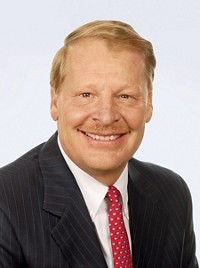Advertisement
Grab your lab coat. Let's get started
Welcome!
Welcome!
Create an account below to get 6 C&EN articles per month, receive newsletters and more - all free.
It seems this is your first time logging in online. Please enter the following information to continue.
As an ACS member you automatically get access to this site. All we need is few more details to create your reading experience.
Not you? Sign in with a different account.
Not you? Sign in with a different account.
ERROR 1
ERROR 1
ERROR 2
ERROR 2
ERROR 2
ERROR 2
ERROR 2
Password and Confirm password must match.
If you have an ACS member number, please enter it here so we can link this account to your membership. (optional)
ERROR 2
ACS values your privacy. By submitting your information, you are gaining access to C&EN and subscribing to our weekly newsletter. We use the information you provide to make your reading experience better, and we will never sell your data to third party members.
Business
Movers And Shakers
Jean-Pierre Clamadieu
The chief executive officer of Rhodia is preparing for the day when he will head Solvay
by Marc S. Reisch
July 4, 2011
| A version of this story appeared in
Volume 89, Issue 27
Jean-Pierre Clamadieu, chairman and chief executive officer of France’s Rhodia, negotiated the sale of the firm to Solvay this spring for $4.8 billion. But rather than retire to the French Riviera, Clamadieu will become CEO of Solvay when the Belgian firm’s current chief executive, Christian Jourquin, 63, retires.
Jourquin hasn’t set his retirement date, although the usual retirement age at Solvay is 65. What is certain is that Clamadieu, 52, is set to be named deputy CEO in charge of integrating the two firms once the deal closes.
Clamadieu spoke to C&EN during a trip to the U.S. intended to explain the benefits of the business combination to employees and customers and to walk staffers through the integration steps that will create the world’s 17th-largest chemical firm, according to C&EN’s Global Top 50 survey.
“This is not a merger driven by significant cost reduction,” is the message he’s delivering to employees and customers. “It is based on joining forces and being a stronger player with more resources to grow.”
Clamadieu understands that employees are concerned for their jobs. Although the merger may mean the elimination of some positions, he has been assuring employees that no jobs will be lost in manufacturing plants, research labs, or business support functions. The two firms are complementary and do not overlap, Clamadieu points out. Rhodia, with annual sales of $7 billion, is a maker of nylon 6,6 polymers, rare earths, and specialty surfactants. Solvay, with sales of $9 billion, produces soda ash, vinyl plastics, and fluoropolymers.
Solvay and customers alike will benefit as the combined firm realizes cost savings of $350 million, Clamadieu stresses. Two-thirds of those savings will come from reductions in procurement costs for energy and raw materials because of the enlarged firm’s purchasing power. The combined group will have more than $1.4 billion in annual energy and oil-derivative purchases. The other third of the anticipated savings will come from overhead cost reductions, he says.
When the two firms merge at the end of August, pending regulatory approvals, the new company will form “a common culture” under the Solvay name, Clamadieu says. But in places where Rhodia is well-known, such as in Brazil, the French company’s name is likely to survive, he says.
That Rhodia has survived at all to this point is in large part due to Clamadieu’s efforts since he became CEO in 2003. At the time, the firm was flirting with bankruptcy after a series of missteps, among them the 2000 purchase of the ChiRex pharmaceutical chemicals business for $545 million.
In 2006, Clamadieu sold the money-losing pharmaceutical operation to Shasun Chemicals & Drugs. He also took a series of steps to reduce the firm’s debt, including selling businesses in latex polymers, industrial phosphates, and silicones. The firm went from losing nearly $2 billion in 2003 to an operating income of more than $1.2 billion in 2010.
However, his past successes don’t necessarily resonate with stock analysts who cover Solvay and haven’t focused on Rhodia. Bernard Hanssens, an analyst with the Belgian investment firm Bank Degroof, says that he understands Clamadieu has a good reputation but that he hasn’t followed the CEO’s career. He hopes to meet Clamadieu at an analysts’ meeting in the fall.
Hanssens says he is disappointed that Solvay had to settle for Rhodia. Still, Solvay had to do something with the $7.6 billion it received from the sale of its pharmaceutical operations to Abbott Laboratories last year, he notes, and it missed out on an opportunity to make a transformational purchase of enzymes specialist Danisco, which went to DuPont earlier this year. Clamadieu admits that combining with Solvay didn’t immediately make sense to him either. Not long after DuPont announced its deal to buy Danisco, Solvay’s Jourquin asked to meet Clamadieu. When the CEOs got together in February, Jourquin proposed the merger.
Clamadieu says Jourquin argued that the two firms would create a strong chemical industry player. In addition, the two share a long history in the industry, are of a similar size, and speak a common language: French.
“At first, Solvay’s offer was a bit of a surprise,” Clamadieu says. “We didn’t know them very well. For a long time Solvay had been a hybrid chemical and pharmaceutical company. They were not part of the group of companies against which we benchmark ourselves” and thus were “outside of our radar screen.”
In addition, Rhodia was following “a stand-alone strategy,” mostly because many of the recent chemical industry combinations involved a bigger player swallowing a smaller one, Clamadieu notes. “That wouldn’t have been a nice situation for our business teams,” he says.
But over the five weeks since his initial meeting with Jourquin, Clamadieu says he and his management team got to know Solvay better and decided the combination could work. The deal, he says, made sense for shareholders and Rhodia’s businesses.
“We received a firm offer from Solvay on April 3. Our board decided to support it, and we announced the deal on April 4,” he explains. “It was five weeks of discussions; they were short but intense.”
When the deal is done, “we won’t close plants and we won’t combine business teams,” Clamadieu says. “The logic of the deal is in creating a strong chemical industry player and making more resources available for us to innovate and grow.” ◾





Join the conversation
Contact the reporter
Submit a Letter to the Editor for publication
Engage with us on Twitter